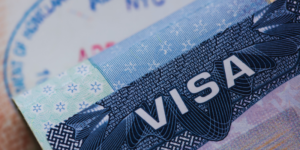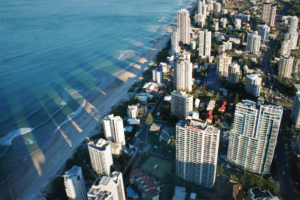Australia is a top destination for skilled professionals seeking new opportunities and a high quality of life. The Australian skilled visa program is designed to attract individuals with the skills needed to fill labor shortages in various industries. In this comprehensive guide, we’ll explore the different types of Australian skilled visas, the eligibility requirements, and the application process to help you embark on your journey to Australia.
Types of Australian Skilled Visas
Skilled Independent Visa (Subclass 189)
The Skilled Independent Visa (Subclass 189) is a points-based visa for skilled workers who are not sponsored by an employer, state, or family member. It allows you to live and work permanently anywhere in Australia.
- Eligibility: You must be under 45 years old, have a positive skills assessment for an occupation on the Medium and Long-term Strategic Skills List (MLTSSL), and meet the points requirement (currently 65 points).
- Application Process: Submit an Expression of Interest (EOI) through SkillSelect, receive an invitation to apply, and then submit your visa application.
Skilled Nominated Visa (Subclass 190)
The Skilled Nominated Visa (Subclass 190) is also points-based but requires nomination by an Australian state or territory government.
- Eligibility: Similar to the Subclass 189, but you must be nominated by a state or territory. Each state has its own list of eligible occupations and specific requirements.
- Application Process: Submit an EOI, receive a nomination from a state or territory, receive an invitation to apply, and then submit your visa application.
Skilled Work Regional (Provisional) Visa (Subclass 491)
The Subclass 491 visa is for skilled workers who want to live and work in regional Australia. This visa requires either state or territory nomination or sponsorship by an eligible family member residing in regional Australia.
- Eligibility: You must be under 45, have a positive skills assessment, and meet the points requirement. Additionally, you must be nominated by a state or territory or sponsored by a family member.
- Application Process: Submit an EOI, receive a nomination or sponsorship, receive an invitation to apply, and then submit your visa application.
Eligibility Requirements
Points Test
The points test assesses your eligibility for a skilled visa based on factors such as age, English language proficiency, skilled employment experience, educational qualifications, and more. To qualify, you need to score at least 65 points. However,
meeting the minimum points requirement does not guarantee an invitation to apply, as higher scores are often needed due to competitive demand.
Skills Assessment
Before you can apply for a skilled visa, you must have your skills assessed by a relevant assessing authority. This ensures that your qualifications and work experience meet Australian standards for your nominated occupation. Each occupation has a designated assessing authority, which will review your credentials and provide an assessment outcome.
English Language Proficiency
You must demonstrate a competent level of English. This typically involves taking an approved English language test, such as the IELTS, TOEFL iBT, PTE Academic, or Cambridge English. The required score varies depending on the visa subclass and your specific circumstances.
Health and Character Requirements
All visa applicants must meet health and character requirements. This usually involves undergoing a medical examination and providing police clearance certificates from every country where you have lived for 12 months or more over the past 10 years.
Application Process
Step 1: Expression of Interest (EOI)
The first step in applying for a skilled visa is to submit an Expression of Interest (EOI) through the SkillSelect system. The EOI is not a visa application but a way to express your interest in applying for a visa. You’ll need to provide detailed information about your skills, qualifications, and employment history.
Step 2: Invitation to Apply
Based on your EOI, you may receive an invitation to apply for a visa. Invitations are issued to applicants with the highest points scores and who meet the criteria for their nominated occupation. The number of invitations issued depends on the visa category and current demand.
Step 3: Lodging Your Visa Application
Once you receive an invitation, you can submit your visa application. You’ll need to provide supporting documents, such as your skills assessment, English language test results, proof of qualifications, employment references, and identity documents. Ensure that all information is accurate and complete to avoid delays.
Step 4: Processing and Decision
After submitting your application, it will be reviewed by the Department of Home Affairs. Processing times can vary depending on the visa subclass and the complexity of your case. During this period, you may be asked to provide additional information or attend an interview. Once a decision is made, you’ll be notified of the outcome.
Step 5: Preparing for Life in Australia
If your visa application is approved, congratulations! You can now start preparing for your move to Australia. This involves arranging travel, finding accommodation, and familiarizing yourself with Australian culture and lifestyle. Additionally, you may need to register with relevant professional bodies or obtain licenses to work in your occupation.
Tips for a Successful Application
Accurate Documentation
Ensure that all your documentation is accurate, complete, and well-organized. Inaccurate or missing documents can lead to delays or refusal of your application.
Meeting Deadlines
Be mindful of deadlines at every stage of the application process. Late submissions can jeopardize your chances of receiving an invitation or having your visa approved.
Professional Advice
Consider seeking professional advice from a registered migration agent or immigration lawyer. They can provide valuable guidance, help you understand complex requirements, and increase your chances of a successful application.
Stay Informed
Stay informed about changes in immigration policies and occupation lists. These changes can affect your eligibility and the points required for your visa.
Conclusion
The Australian skilled visa program offers numerous opportunities for skilled professionals to live and work in Australia. By understanding the different visa subclasses, eligibility requirements, and application processes, you can take the first steps toward achieving your Australian dream. With careful preparation and the right support, you can navigate the complexities of the visa process and embark on a new chapter in Australia.




